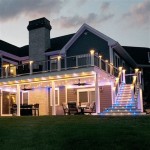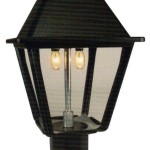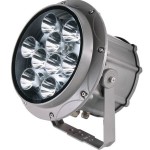Are Outdoor Heat Lamps Safe For Dogs?
As temperatures drop, many pet owners consider using supplemental heating solutions to keep their canine companions comfortable outdoors. Outdoor heat lamps are a popular option, offering targeted warmth for patios, decks, and dog houses. However, before implementing this technology, it's imperative to understand the potential risks and safety considerations associated with heat lamps and their impact on dogs.
Heat lamps function by emitting infrared radiation, which directly heats objects and surfaces within their range. This is different from convection heaters, which warm the air. The intensity of the heat generated by a heat lamp can be substantial, and prolonged exposure or close proximity can pose various health hazards to animals, particularly dogs.
The primary concern regarding heat lamps and dogs revolves around the potential for burns. Dogs, especially those with shorter coats or underlying health conditions, are more susceptible to overheating and skin damage. It is crucial to examine the specifics of heat lamp safety when considering its use in proximity to pets.
Understanding the Risks: Potential Dangers of Heat Lamps to Dogs
Several factors contribute to the potential dangers of outdoor heat lamps for dogs. The most significant risks include thermal burns, dehydration, eye damage, and behavioral changes. Each of these concerns requires careful consideration when deciding whether or not to use heat lamps in an environment accessible to dogs.
Thermal Burns: Dogs can easily get too close to a heat lamp, resulting in burns to their skin. Unlike humans, dogs may not immediately recognize the discomfort or danger, especially if involved in resting or asleep. Prolonged exposure can lead to first, second, or even third-degree burns, causing significant pain and requiring veterinary intervention. The severity of the burn depends on the intensity of the heat, the duration of exposure, and the dog's coat thickness. Areas with thinner fur, such as the ears, belly, and paws, are particularly vulnerable.
Dehydration: Heat lamps can contribute to dehydration. The focused heat increases the body's water loss through panting and evaporation. If a dog doesn't have adequate access to fresh water, using a heat lamp, even for short periods, can rapidly lead to dehydration. Signs of dehydration in dogs include sunken eyes, dry gums, loss of skin elasticity, and lethargy. Severe dehydration is a life-threatening condition that requires immediate veterinary care.
Eye Damage: Direct and prolonged exposure to the intense infrared radiation emitted by heat lamps can cause eye damage in dogs. The cornea and lens of the eye are susceptible to damage from excessive heat, potentially leading to cataracts or other vision problems. Dogs may not instinctively look away from the light source, making them more vulnerable to retinal damage. Puppies and senior dogs are particularly at risk due to their more sensitive eyes.
Behavioral Changes: Overheating can cause behavioral changes in dogs, including increased restlessness, anxiety, and aggression. Discomfort from the heat can lead to irritability and a decreased tolerance for handling. In some cases, dogs may exhibit signs of heatstroke, such as excessive panting, drooling, vomiting, and collapse. These behaviors should be taken as a serious indication of discomfort and require immediate cooling measures and potentially veterinary intervention.
Implementing Safety Measures: Best Practices for Using Heat Lamps Around Dogs
If a pet owner still chooses to utilize outdoor heat lamps, implementing several critical safety measures can reduce the risks and mitigate the potential harm to dogs. These measures involve careful placement, temperature regulation, supervision, and providing alternatives.
Strategic Placement: The location of the heat lamp is paramount. The lamp should be positioned out of the dog's direct reach, ideally mounted high enough to prevent accidental contact. Ensure the dog cannot jump or climb onto any surface that brings them closer to the lamp. Consider installing protective cages or shields around the lamp to prevent direct contact with the hot surface. Furthermore, the heat lamp should not be pointed directly at areas where the dog typically rests or sleeps. Maintaining a safe distance is crucial to preventing burns and overheating.
Temperature Regulation: Use heat lamps with adjustable temperature settings to control the amount of heat emitted. A thermostat can help maintain a consistent and comfortable temperature, preventing overheating. Regularly monitor the temperature in the area where the dog spends time, using a thermometer to ensure it remains within a safe range. Avoid using high heat settings, especially for prolonged periods. Consider using a timer to limit the duration of the heat lamp's operation, preventing continuous exposure and reducing the risk of overheating.
Constant Supervision: Supervise dogs closely when the heat lamp is in use. Observe their behavior for any signs of discomfort, such as excessive panting, restlessness, or attempts to move away from the heat source. Intervene immediately if the dog gets too close to the lamp or exhibits any symptoms of overheating. Never leave a dog unattended near a heat lamp, as they may inadvertently injure themselves or become overheated without intervention. Regular monitoring is essential to ensuring the dog's safety and well-being.
Provide Alternatives: Offer alternative heating options that are safer and more controlled. Heated dog beds or blankets provide localized warmth without the risk of burns or overheating. Insulated dog houses can retain heat and provide a sheltered environment during cold weather. Providing a variety of options allows the dog to choose the most comfortable environment and reduces their reliance on the heat lamp. Regularly check these alternatives to ensure they are functioning properly and maintaining a safe temperature.
Alternatives to Heat Lamps: Safer Heating Solutions for Dogs
Given the inherent risks associated with heat lamps, exploring safer alternative heating solutions for dogs is a prudent course of action. These alternatives offer more controlled and less hazardous ways to keep dogs warm during cold weather. These include heated beds, insulated dog houses, and appropriate outdoor clothing.
Heated Dog Beds: Heated dog beds are a safer and more comfortable alternative to heat lamps. These beds provide gentle, localized warmth, allowing the dog to regulate their body temperature as needed. They typically feature low-voltage heating elements and automatic shut-off mechanisms to prevent overheating. Choose a heated bed that is appropriately sized for the dog and made from durable, pet-safe materials. Regularly inspect the bed for any signs of damage or wear to ensure it continues to function safely.
Insulated Dog Houses: An insulated dog house offers a sheltered and warm environment for dogs during cold weather. The insulation helps to retain heat and protect the dog from wind and moisture. Ensure the dog house is appropriately sized, allowing the dog to stand, turn around, and lie down comfortably. Provide bedding material, such as straw or blankets, to further insulate the space. Regularly clean the dog house to prevent the buildup of dirt and bacteria. An insulated dog house provides a safe and comfortable refuge from the elements.
Appropriate Outdoor Clothing: For dogs with short coats or those sensitive to cold weather, consider using appropriate outdoor clothing, such as sweaters or coats. These garments provide an extra layer of insulation and help to retain body heat. Choose clothing that fits properly and does not restrict movement. Ensure the clothing is made from breathable materials to prevent overheating and moisture buildup. Regularly check the dog's skin for any signs of irritation or chafing from the clothing. Appropriate outdoor clothing can significantly enhance a dog's comfort and warmth during cold weather.
In conclusion, while outdoor heat lamps can provide warmth, it is critical to carefully weigh the associated dangers against any potential benefits. Prioritize safety by implementing strict measures or exploring alternative heating solutions to ensure the well-being of canine companions.

Climateright 300 Watt Electric Dog House Heater 1023 Btu With 3 Fan Settings For Outdoor Pet Enclosures Crph1 The Home Depot

Climatesafe By Climateright Electric Heater And Bonus Internal Fan For Com

Dog House Heater With Thermostat App Remote Control 300w Safe Heate Petnf

Are Heat Lamps Safe For Dogs

Heater Dog House Diy Heated

The 2 Best Outdoor Patio Heaters Of 2024 Reviews By Wirecutter

How To Choose A Patio Heater The Home Depot

When It S Too Hot To Walk Your Dog Outside Stella Chewy

The 2 Best Outdoor Patio Heaters Of 2024 Reviews By Wirecutter

Dog House Heater Outdoor Pet With Thermostat Wifi App Remote Control 300w Safe Heaters For Outside Adjustable Timer Temp 6ft Anti Chew Cord Cat Yahoo Ping







